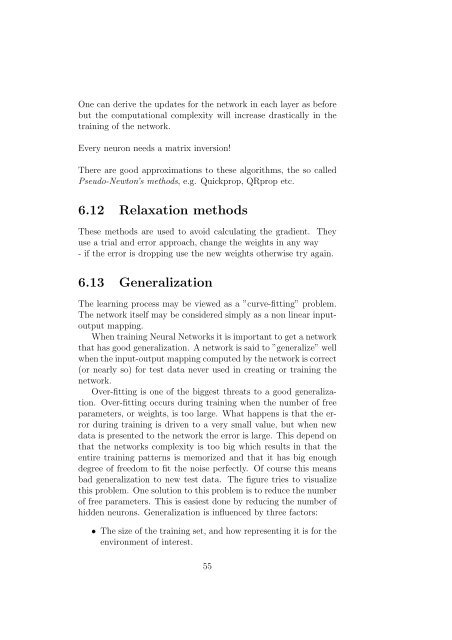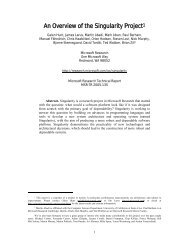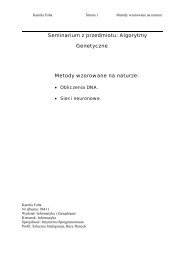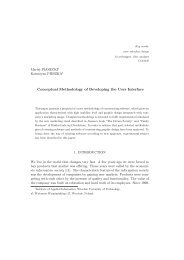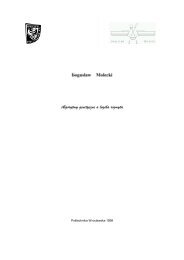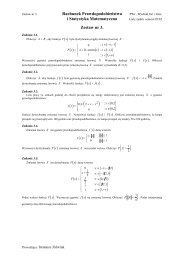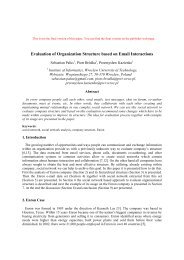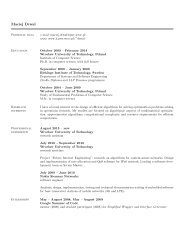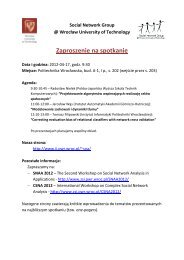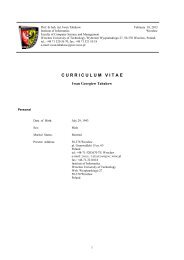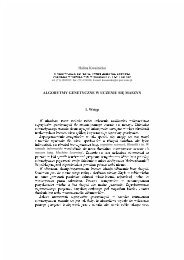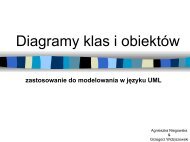Chapter 2 Introduction to Neural network
Chapter 2 Introduction to Neural network
Chapter 2 Introduction to Neural network
Create successful ePaper yourself
Turn your PDF publications into a flip-book with our unique Google optimized e-Paper software.
One can derive the updates for the <strong>network</strong> in each layer as before<br />
but the computational complexity will increase drastically in the<br />
training of the <strong>network</strong>.<br />
Every neuron needs a matrix inversion!<br />
There are good approximations <strong>to</strong> these algorithms, the so called<br />
Pseudo-New<strong>to</strong>n’s methods, e.g. Quickprop, QRprop etc.<br />
6.12 Relaxation methods<br />
These methods are used <strong>to</strong> avoid calculating the gradient. They<br />
use a trial and error approach, change the weights in any way<br />
- if the error is dropping use the new weights otherwise try again.<br />
6.13 Generalization<br />
The learning process may be viewed as a ”curve-fitting” problem.<br />
The <strong>network</strong> itself may be considered simply as a non linear inpu<strong>to</strong>utput<br />
mapping.<br />
When training <strong>Neural</strong> Networks it is important <strong>to</strong> get a <strong>network</strong><br />
that has good generalization. A <strong>network</strong> is said <strong>to</strong> ”generalize” well<br />
when the input-output mapping computed by the <strong>network</strong> is correct<br />
(or nearly so) for test data never used in creating or training the<br />
<strong>network</strong>.<br />
Over-fitting is one of the biggest threats <strong>to</strong> a good generalization.<br />
Over-fitting occurs during training when the number of free<br />
parameters, or weights, is <strong>to</strong>o large. What happens is that the error<br />
during training is driven <strong>to</strong> a very small value, but when new<br />
data is presented <strong>to</strong> the <strong>network</strong> the error is large. This depend on<br />
that the <strong>network</strong>s complexity is <strong>to</strong>o big which results in that the<br />
entire training patterns is memorized and that it has big enough<br />
degree of freedom <strong>to</strong> fit the noise perfectly. Of course this means<br />
bad generalization <strong>to</strong> new test data. The figure tries <strong>to</strong> visualize<br />
this problem. One solution <strong>to</strong> this problem is <strong>to</strong> reduce the number<br />
of free parameters. This is easiest done by reducing the number of<br />
hidden neurons. Generalization is influenced by three fac<strong>to</strong>rs:<br />
• The size of the training set, and how representing it is for the<br />
environment of interest.<br />
55


